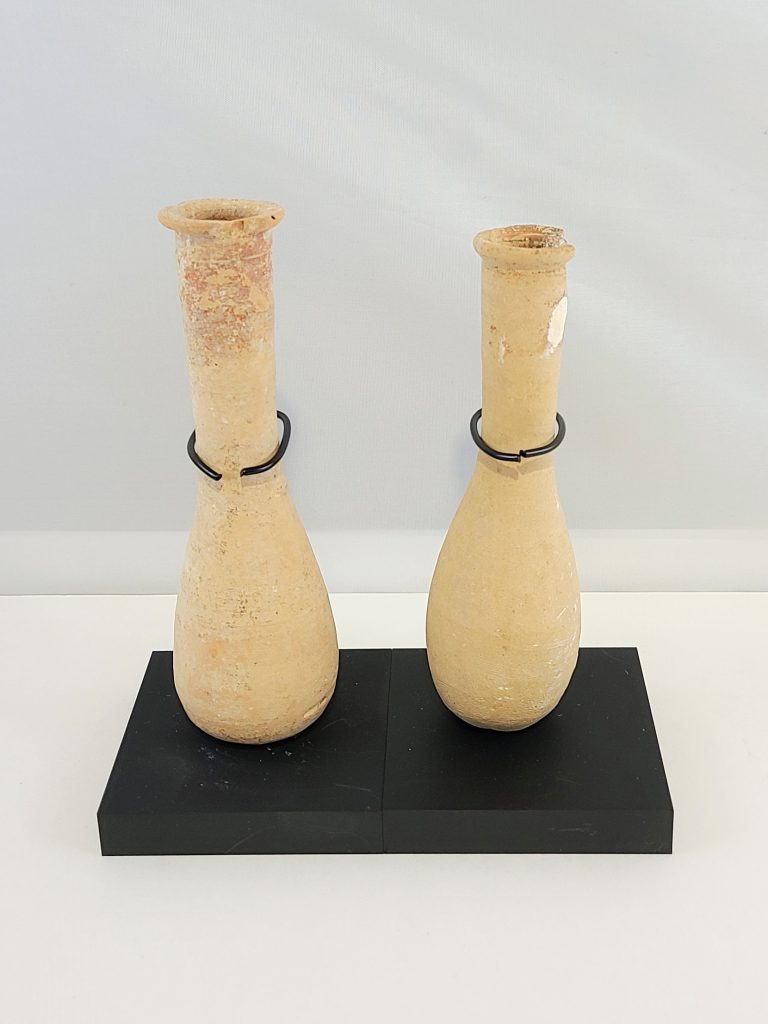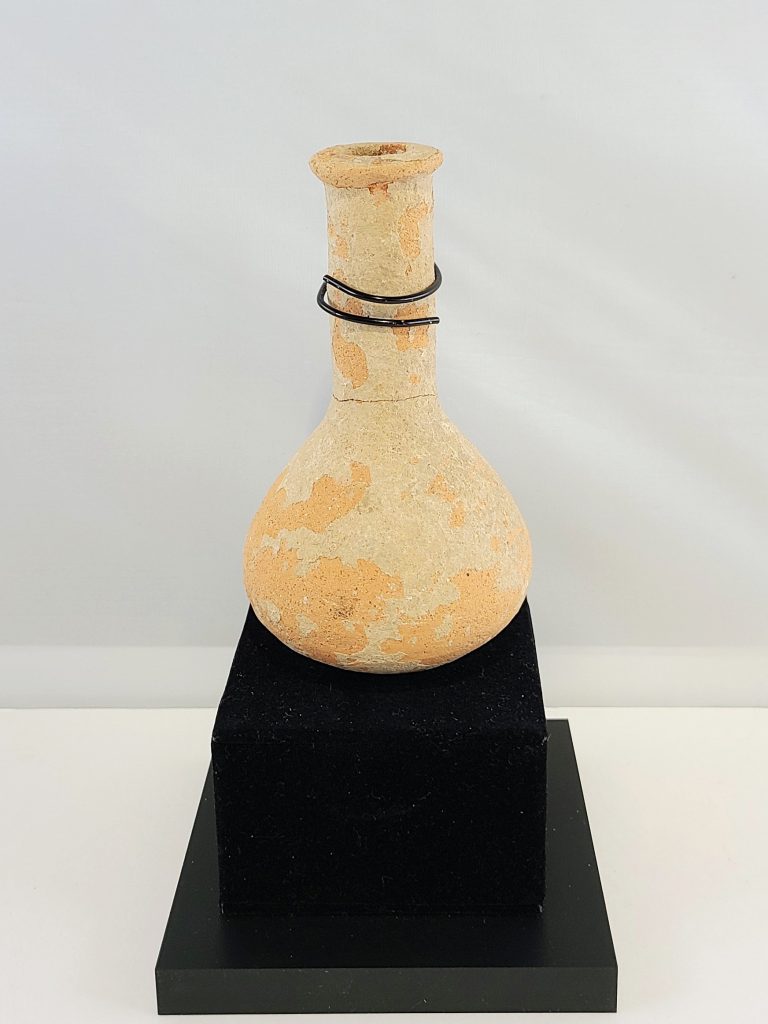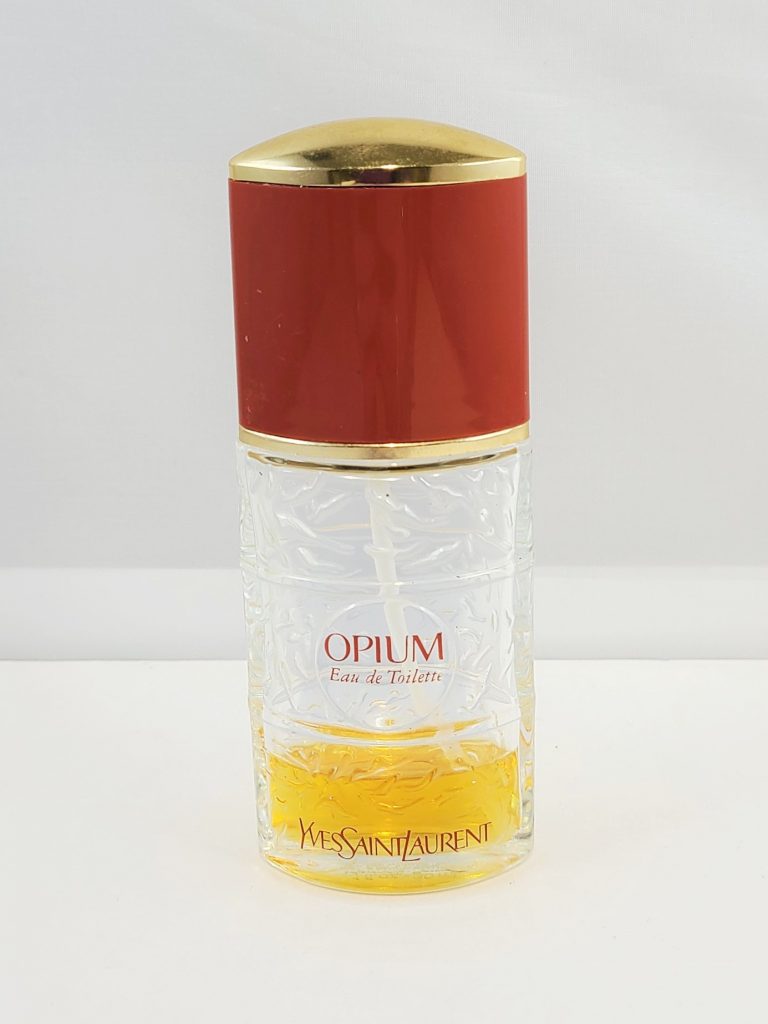Scents and Social Status
People in the provinces and borderlands of the Roman Middle East wanted to buy into the Roman lifestyle. They adopted Roman customs, fashions, and manners. They also created and purchased Roman-style products.
Certain types of pottery, like the ubiquitous perfume bottle, became symbols of a cosmopolitan elite culture that crossed the borders of Rome and Parthia. In ancient Rome, you could tell a person’s social class by the way they smelled: the poor notoriously reeked of garlic, whereas the rich took their perfume-bottles to the baths to get rubbed down with scented oils.

Unguentaria
1st – 2nd c. CE
The ancient unguentarium (plural: unguentaria), a vessel for scented oils and perfumes, was the perfect sign of worldly comfort for the rising middle class of the Roman-Parthian Middle East. When you bought one of these bulbous little bottles full of perfume, you were buying into a cosmopolitan life of leisure.

Unguentarium
1st – 2nd c. CE
As more and more city-dwellers could afford their bottle of frankincense, these little luxuries became mass-produced. Provincial potters made affordable local copies of the vessels that were shipped in bulk from Italy and the eastern Mediterranean.

Perfume Bottle
early 21st c. CE
Chances are, if you buy a bottle of perfume, you’re more interested in the contents than in the bottle itself. But designers today go out of their way to make even the cheapest containers into symbols of luxury, much like the ancient unguentarium.
